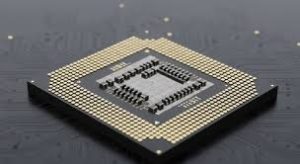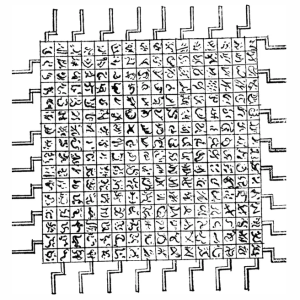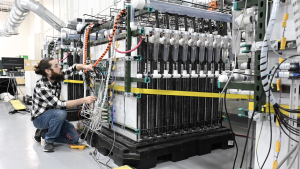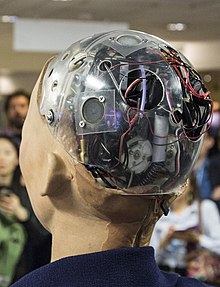“Wireless Energy”

Photo from Wikipedia: 1904 image of Wardenclyffe Tower
By Scott Hamilton
I came across some fascinating news in the realm of power distribution and space exploration this week on the Science and Nature page. The U.S. has built the first satellites capable of “beaming” power wirelessly to drones and spacecraft. This allows for these craft to be powered without fuel or solar panels. I have often wondered if anyone would reattempt the experiments done by Nikola Tesla decades ago in wireless power transmission, but never really imagined it being accomplished in space.
Once again I see technology going full circle and an older technology coming to new light. Tesla performed his first experiments on wireless energy transfer utilizing high frequency alternating currents as early as 1891. On September 2, 1897, he filed his patent for a system transmitting power through a natural medium. In this early patent he planned to utilize the surface of the Earth and the ionosphere as a conductor and was granted the patent on March 3, 1900. If you don’t know, the ionosphere is a layer of charged particles in the upper atmosphere that protects our planet from harmful radiation coming from space and the sun. The ionosphere is the reason we see the aurora borealis. In recent years the government has been conducting multiple experiments to understand the ionosphere and I believe it may be the reason for the increase in aurora borealis sightings in our area.
In 1899, Colorado Springs, Colorado, experienced the genius of Tesla head on. He traveled there and bought land to build his high-altitude laboratory. It was in the lab that Tesla first attempted large scale experiments on the wireless energy transfer technology. He chose the location for its elevation of more than 6,000 feet and its frequent lightning storms. The experiments he conducted there demonstrated the feasibility of wireless power transfer.
In 1901, with funds from J.P. Morgan, he constructed the Wardenclyffe Tower and its neighboring laboratory. The tower was intended to be the source of wireless power and communications for New York. The tower stood 187 feet tall, included a 68-foot metal dome and an immense network of underground iron rods and copper plates. His choice of iron and copper underground were not by accident. If you bury a series of iron and copper wires in the correct configuration you can create an Earth-powered battery. It’s not clear if this was his reason, but it seems possible.
The Wardenclyffe Tower never became operational and was sold for scrap in 1917; by this time Tesla had moved on to new projects. However, the research he conducted led to the invention of radio and television transmission. While he never reached his goal of a global wireless power grid, he effectively created the underlying technology for all our communications networks in use today.
How were they able to overcome the hurdles Tesla faced when attempting this feat on the ground and within the atmosphere? The atmosphere was constantly changing and created massive challenges in Tesla’s systems. The danger of transmitting high voltage signals across the ionosphere and surface of the ground proved to be further difficulties in his design. By placing the system in space we overcome both of these obstacles. They are also relying on some new technology involving lasers and solar collectors, which did not exist in Tesla’s time.
The U.S. has launched a network of satellites which are currently in operation successfully transmitting power through space, utilizing high-efficiency solar collectors and optical laser arrays to “beam” power directly to drones, other satellites and lunar rovers. This is just the beginning of orbital wireless charging and the U.S. is leading the race.
The satellites gather much higher levels of solar radiation than is possible within the atmosphere; rather than utilizing batteries the solar power is stored in graphene-based supercapacitors. These supercapacitors can withstand very rapid charge and discharge cycles making them much better than batteries in these space-based power-plants. These satellites have large solar arrays to maintain their energy charge, but reduce the need for large solar panels or heavy fuel tanks on the drones and other satellites.
My basic understanding of how this works is through the use of guided lasers; they can hit much smaller solar panels on the remote device and “beam” power to the other spacecraft. When the energy is concentrated into a narrow beam of light you can use smaller and more efficient panels to convert the light back to electricity for systems on the secondary spacecraft. A solar panel really does not care if it is getting the energy from the sun or from an artificial light source, as long as it gets the correct frequency of light it will produce power. Given that fact maybe they should be called light panels instead.
Researchers stated that the largest difficulty they had in designing the system was the accuracy of the tracking mechanisms and the ability to hit the target over the vast distances in space. NASA and SpaceX are working together to expand this satellite network to enable safer travel to the moon. The ultimate goal is a fully-automated power grid in space, beaming clean energy to wherever it is needed, including in orbit, on Earth, or on the Moon. They have learned that as little as a two degree misalignment renders the system useless. The other factor I could not find anywhere is how the efficiency of this system compares to the wired power distribution used globally. Until next week stay safe and learn something new.
Scott Hamilton is an Expert in Emerging Technologies at ATOS and can be reached with questions and comments via email to shamilton@techshepherd.org or through his website at https://www.techshepherd.org.






